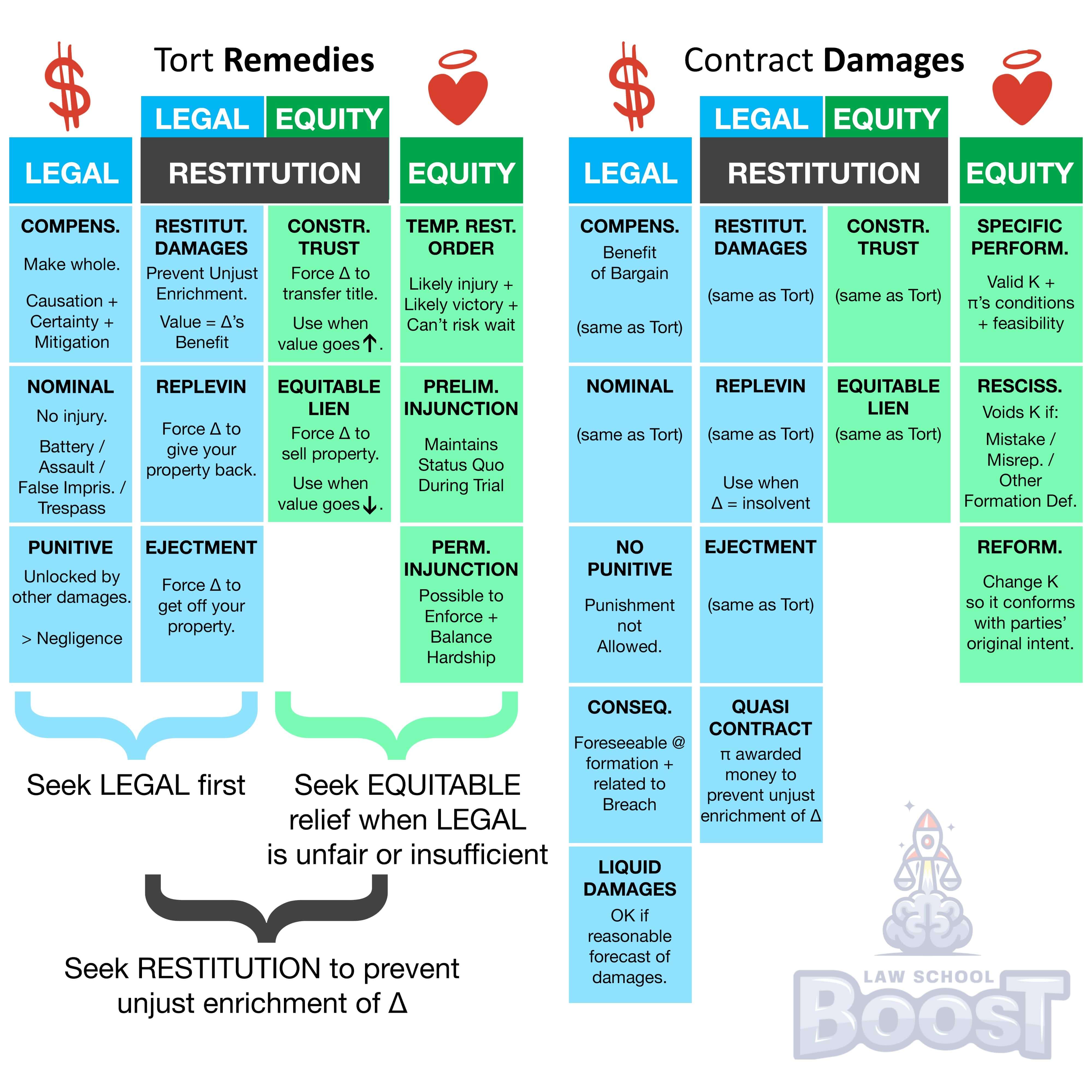🏥
Remedies • Tort - Legal Restitutionary Remedies
REM#013
Legal Definition
Restitutionary damages are calculated based on the value of a benefit to the defendant, and are appropriate where the plaintiff suffered no injury though the defendant benefited. While a plaintiff may seek restitutionary damages where compensatory damages are available, they cannot be awarded both.
Plain English Explanation
Imagine if someone stole $100 from you, took it to Las Vegas, gambled with it, and won $1,000. Even if they gave you back the $100, it would still mean they have $900 that they wrongfully made gambling with (and risking) money they stole from you. Forcing them to pay you back $100 doesn't set a very strong precedent to discourage them from stealing $100 again in the future to gamble with. Even forcing to pay you back "with interest" would fall short of the $900 profit.
In this scenario, restitutionary damages would require that they give you the entire $1,000.
This may seem weird, since it now provides you much more than the $100 that you were at risk of losing when the money was originally stolen. But, from the court's perspective, it's the most logical choice to make. Why? Well, it definitely isn't an option to let the thief keep any money that they wrongfully made, but the money has to be owned by someone. It would be silly to return it back to the casino, so it only makes sense that out of anyone in the world who may have a rightful claim to the extra $900, it is the person who provided the initial money to gamble. Also note that in this example, compensatory damages would merely be $100 (to compensate for the amount of money stolen). Given the choice between $100 and $1,000, it is obvious why anyone in this situation would choose restitutionary damages and get much more money.
In this scenario, restitutionary damages would require that they give you the entire $1,000.
This may seem weird, since it now provides you much more than the $100 that you were at risk of losing when the money was originally stolen. But, from the court's perspective, it's the most logical choice to make. Why? Well, it definitely isn't an option to let the thief keep any money that they wrongfully made, but the money has to be owned by someone. It would be silly to return it back to the casino, so it only makes sense that out of anyone in the world who may have a rightful claim to the extra $900, it is the person who provided the initial money to gamble. Also note that in this example, compensatory damages would merely be $100 (to compensate for the amount of money stolen). Given the choice between $100 and $1,000, it is obvious why anyone in this situation would choose restitutionary damages and get much more money.
Hypothetical
Hypo 1: Bob sneaks onto Sam's farm and steals his prize-winning cow. Bob takes the cow to market and sells it for $5,000. Result: Bob has to pay Sam $5,000 in restitution for the cow's value.
Hypo 2: Bob hacks into Sam's bank account and transfers $10,000 to himself. Result: Bob has to repay the $10,000 in restitution.
Hypo 3: Bob picks apples from Sam's orchard without permission and uses them to bake pies. Bob sells the pies at a bake sale for $500. Result: Bob owes Sam $500 restitution for the value gained from the stolen apples.
Hypo 4: Bob accidentally crashes his car into Sam's shed, destroying it. Result: Restitution does not apply because Bob did not intend to gain a benefit by destroying the shed. Sam can sue for damages to replace the shed but not for restitution.
Hypo 2: Bob hacks into Sam's bank account and transfers $10,000 to himself. Result: Bob has to repay the $10,000 in restitution.
Hypo 3: Bob picks apples from Sam's orchard without permission and uses them to bake pies. Bob sells the pies at a bake sale for $500. Result: Bob owes Sam $500 restitution for the value gained from the stolen apples.
Hypo 4: Bob accidentally crashes his car into Sam's shed, destroying it. Result: Restitution does not apply because Bob did not intend to gain a benefit by destroying the shed. Sam can sue for damages to replace the shed but not for restitution.
Visual Aids



